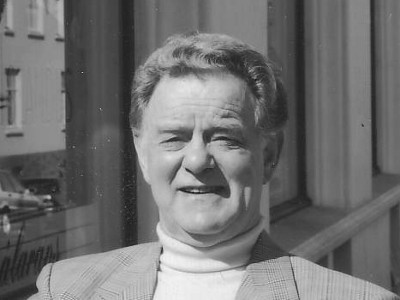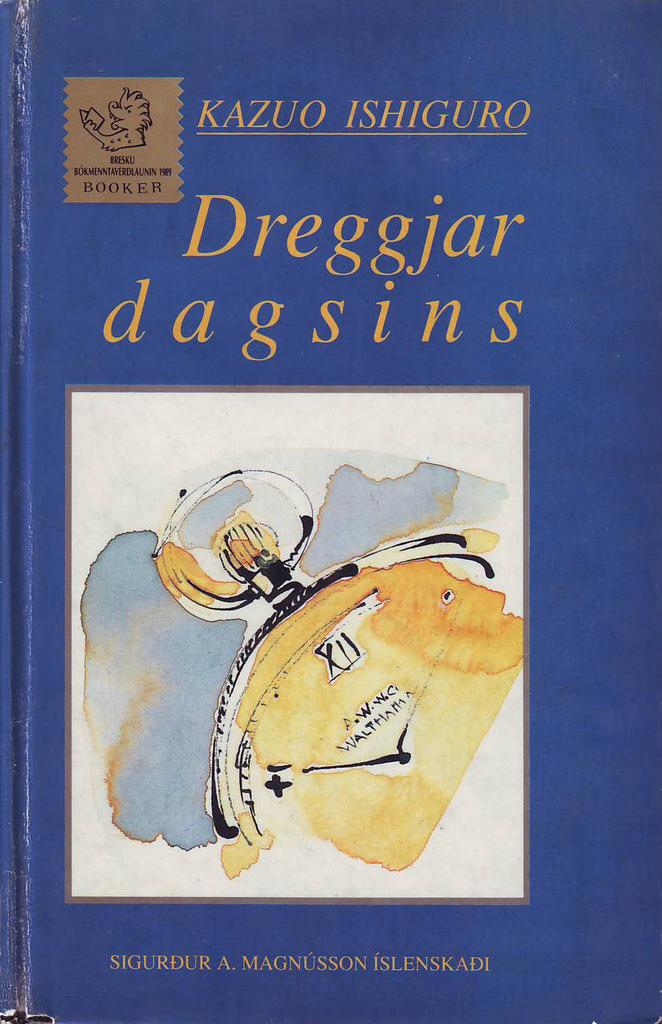Bio
Sigurður A. Magnússon was born on March 31, 1928 at Móar in Kjalarnes near Reykjavík. He graduated from highschool in 1948 and then went on to study theology, Greek and religious history at the University of Iceland untill 1950. In 1950 Sigurður went to Copenhagen to study theology and literature at the University of Copenhagen for a year. He studied history and literature at the University of Athens untill 1952. After that Sigurður moved to Sweden where he studied literature at the University of Stockholm. He completed a B.A. degree in comparative literature at The New School for Social Research in New York in 1955.
Sigurður was a teacher at the Iceland School of Navigation and the Austurbær Children's School from 1948 and 1950. He was a radio-lecturer for the United Nations and taught Icelandic at The City College of New York from 1954 - 1956. He was a lecturer in Old Icelandic Literature in The New School for Social Research in 1955-1956. Sigurður then returned to Iceland and became a journalist for the daily Morgunblaðið from 1956 - 1967 and the editor of Lesbók Morgunblaðsins (a cultural supplement) from 1962 - 1967. He was the editor of Samvinnan magazine from 1967 - 1974 and the Headmaster of the Correspondence School from 1974 - 1977.
Sigurður A. Magnússon was an active participant in social activities and the chairman of many societies and clubs. He was chairman for the Society of Icelandic Theatre Critics from 1963 - 1971, The Writers Association of Iceland 1971 - 1972 and The Writers Union of Iceland, the former from 1972 - 1974. Sigurður was the first chairman of The Writers’ Union of Iceland in the years of 1974 - 1978. He was the chairman of the Nordic Writers‘ Council in 1976 - 1977 and the Icelandic department of Amnesty International 1988 - 1990 and 1993 - 1995. Sigurður sat on an international committee for the Neustadt International Prize for Literature in 1986 and the committee for the Nordic Literary Award from 1990 - 1998. Sigurður A. Magnússon wrote numerous essays on social and educational matters for newspapers and magazines. He also worked as a guide in Asia, Greece, India, Nepal, Japan and Brazil.
Sigurður wrote a number of books in Icelandic and English, among them novels, poetry, plays, travelogues, autobiographies, collections of articles and books about the Icelandic horse. His first book was the travelogue Grískir Reisudagar (Travels in Greece) published in 1953. Sigurður worked to promote Icelandic literature abroad, edited readers and translated Icelandic poetry. He has also translated a number of works from Danish, English, Greek and German, for example works by H.C. Andersen, Bertolt Brecht, Gíorgos Seferis, Pandelis Prevalakis, Walt Whitman, James Joyce, Nagíb Mahfúz, Kazuo Ishiguro, John Fowles and Ernest Hemingway.
Sigurður A. Magnússn died on April 2nd, 2017.
From the Author
Why all the toil?
In my childhood home, there were only two or three books. I did not learn to read until I was in my ninth year – I have always been a slow reader – and read little other than my school books throughout my grade school years. On the other hand, my father was, in his own way, a poetry lover; he knew whole poetry books by heart and sometimes recited poems, mainly when he had been drinking. Maybe that had something to do with me getting the idea, when I was ten or eleven, that poems were in fact the salt of the earth. At that time I put together some rhymes, influenced by the poetry of Einar Benediktsson. At about the same time, I experienced a kind of revelation early on sunny mornings when everyone was fast asleep and I meandered the road in Laugarnes to fetch the horses in the fields by Kleppsvegur. I tell this story in my book Möskvar morgundagsins (Nets of Tomorrow), in the chapter “Morgunsár” (Crack of Dawn) from 1981. There it says: “I was filled with the unbearable longing to express this experience for others, for it was surely unique I thought: that I was privileged beyond other mortals, except maybe in their dreams, simply because they were all fast asleep and for that reason missed the morning gifts of divine nature.” – Perhaps this reveals a seed that bloomed decades later.
I then found my way into YMCA when I was twelve and became a true believer soon after my confirmation. It was as if poetry became a closed book for me for a whole decade after that. It wasn’t until after I came back from Greece in the summer of 1952 that I made an attempt at putting together a poem. This was in Finland. There I met a girl who wrote poetry and she opened this vein. A year later I was in the United States and there I enrolled in a course in modern poetry that was part of the university studies. This opened up new dimensions for me. After I came home in 1956 I put together four books of poetry over a long period of time. The first one, Krotað í sand (Scribbled in Sand) from 1958, got a rather bad reception, as it turned out that a critic who sent forward a book of poetry became a popular target point. Then the book Hafið og kletturinn followed in 1961 (The Ocean and the Rock). I myself feel it is the most complete of my poetry books, supported by the fact that translations from it have been well received abroad, not least in Greece, but in Iceland it was as good as killed with silence. I have never understood why. It is possible, as I have heard, that my poems carry with them an “un-Icelandic” air. In any case, these poems have spoken in a different way to foreigners than to my fellow countrymen – they have been translated to Greek, English, German, French, Russian, Ukrainian, Bulgarian, Chinese, Latvian, Danish and Norwegian.
The books that came later, Þetta er þitt líf (This is Your Life, 1974) and Í ljósi næsta dags (In the Light of the Day After, 1978), however got very good reviews, especially the first one, and seem to have for some reason spoken more strongly to Icelandic readers. Perhaps because they are more personal and open about the author’s personal matters.
I have done almost every type of writing, written poetry, stories, plays, biographies, travel stories, essays and translations, both prose and poetry. Which of these genres is closest to my heart is hard to say. Poetry was for a long time closest to me, but I have also enjoyed writing travel stories, books that introduce Iceland and essays about literature and social issues. The best result seems to have been the book about the Icelandic horse and my autobiography, which started with the book about my childhood, Undir kalstjörnu (Under a Dead Star, 1979) and now fills eight volumes with the book Á hnífsins egg (On the Knives’ Edge, 2001).
Although it does not occur to me to measure myself against my friend Þórbergur Þórðarson, who also wrote autobiographical books, we have in common that both of us are better at putting together works that are based on our own experiences rather than pure fiction. I however do think that autobiographies are a kind of fiction, but will not go into that here. Halldór Laxness said to me in 1981 that I had written three “classic works”, Við elda Indlands (By the Fires of India; 1962 and 1983) and the two volumes of my autobiography that had been published at the time. This comment has warmed my heart in recent years, when it became apparent that the following volumes did not sell as well as the first ones.
I have found the drive within myself to publish several books in English in order to introduce Icelandic culture, in broad sense, to foreign readers. Among these I can mention Northern Sphinx – Iceland and the Icelanders from the Settlement to the Present (1977 and 1984), Iceland – Country and People (1978, 1986 and 1994), which came out in five languages, The Iceland Horse (1978), published in eight languages, Iceland – A Modern Artistic Renaissance (1985), The Icelanders (1990) and Iceland – Isle of Light (1995). In addition to this, eight books of English translations can be added, among them The Postwar Poetry of Iceland (1982) and This is Iceland Today (2000).
Icelandic translations are a special chapter in my writing career that I am very proud of. I have mostly translated from English, Greek, German and Danish. Among the books that have been considered especially noteworthy are the only works that have been translated to Icelandic from modern Greek: the novel Sól dauðans (O ilios tou thanatou¸1964) by Pandelís Prevelakís, the poetry book Goðsaga (Mýþistórím; 1964) by Gíorgos Seferís and Naktir stóðum við – Fimm grísk nútímaskáld (Naked We Stood – Five Modern Greek Poets) in 1975. From Arabic literature I have translated two novels by the Egyptian Nagíb Mahfúz, Blindgata í Kaíró (Midaq Alley; 1989) and Míramar (1990). From German I translated Bertolt Brecht’s Túskildingsóperan (Die Dreigroschenoper, 1959) in addition to his poems and stories in two collections (1989 and 1994). Among books translated from English are Remains of the Day by Kazuo Ishiguro (1990), The Collector by John Fowles (1991), Leaves of Grass by Walt Whitman (1994), True at First Light by Ernest Hemingway (1999), along with three works by James Joyce, Dubliners (1982), Ulysses I-II (1992 and 1993), and A Portrait of the Artist as a Young Man (2000). Two volumes of poetry from various languages can be added to this list (1994 and 1995).
I have only mentioned a few of over 70 books, translated or original, that I have sent forward in my 48 years of writing. And this probably fuels the question if all this toil has been worth it. What was I seeking when I started on the harsh journey of the writer? Sigmund Freud maintained that writers first and foremost seek fame, power, wealth or the admiration of beautiful women, but I think he was wrong. At least these motivations were not conscious ones in my case. It was first and foremost the teacher in me that led the way, the wish to share with others my experience and that which I found to be useful knowledge in my life. Twenty years of journalism did not fulfill me, although at times this job was both challenging and enjoyable. It bothered me to be tied to the current moment and to be writing for the paper bins of my fellow citizens.
Maybe this was just vanity, deriving from the old: “Deyr fé, / deyja frændur, /deyr sjálfur ið sama; / en orðstír deyr aldregi, / hveim er sér góðan getur.” (Cattle die, / Kinsmen die, / Yourself you’ll die the same; / I know but this / That never dies: / Reputation in posterity). These words from the Poetic Edda have been like a chorus in the undertakings of Icelanders for eleven centuries and are on a daily basis emphasized in the never ending stream of obituaries in Morgunblaðið newspaper. In a certain way, the passion of writing and the sex drive are the same: we want to leave offspring. This is a deep need, not necessarily for fame and fortune, but for the “undieable deed” I talk about in my latest book of poetry. An undiable deed means that you can do something of importance for those who come after you. Yet, at the same time, we never become free of a pressing doubt. In all likelihood we will die with the hunting suspicion that all our work is in vain. Maybe this can be likened to love affairs. They may all have been for nothing, except one or two that bore some fruit. While they lasted, they were still all important. The same can be said about writing.
Sigurður A. Magnússon, 2001.
Translated by Kristín Viðarsdóttir. The translated lines from the Poetic Edda are from The Wisdom of the Vikings. Compiled and translated by Nicholas Jones. Edda UK, Cambridge, 2005.
About the Author
All Things Considered. On the Writings of Sigurður A. Magnússon
It is by no means easy to assess Sigurður A. Magnússon’s role and position in Icelandic literary and cultural life. He is an “author” in a particularly broad sense of that designation. He has published poems, plays and short stories, and in 1961 his first novel, Næturgestir (Night Visitors), saw the light of day. But in fact those particular literary genres, which most of traditional literary history consists of, only accommodate a small portion of his works. He has long worked as an editor, journalist, critic, translator, a writer of travel books and other non-fiction works, and last but not least a multi-volume, autobiography in a fictional mode, beginning with Undir kalstjörnu (Under a Dead Star, 1979). In all he produced five volumes of this coming-of-age story in seven years, and between 1997-2001 a sequel came out in three volumes.
Sigurður was born in 1928 and is still an industrious writer, at the outset of a new century. The career of this versatile and prolific writer challenges one to define the world of literature and literary history in a broader sense than is commonly done. Literary-historical thought has often focused on a sequence of selected literary works, while largely ignoring the literary life and cultural environment, which has to be in place in order for individual works of literature to thrive.
If one were to adopt a narrower point of view, two things might bear mention. One could go on at length about how Sigurður’s best poems indicate that he had all the makings of a great poet, had he chosen to concentrate on the genre (that is, on writing original poetry). There is also no doubt that with his coming-of-age story, Sigurður became a key figure in another and often undervalued literary genre. No small thanks to his autobiographical novels, Icelandic eyes were opened anew to the inherent literary value of good biographies. I use the word “anew” because despite major achievements by Þórbergur Þórðarson in this genre and the good work of various other authors, it has long been denied its rightful place in Icelandic letters, although this may be changing in later years.
We have now in fact already moved beyond the above-mentioned narrow point of view, and Sigurður’s contribution to the genre of biography is in itself an indication of the broad range of his writings. Sigurður’s poetic expression has in many ways been freer in his biographies than in his original poems. A good example is this description of Greek light in Með hálfum huga (Half-heartedly), one of his autobiographical volumes:
When I bade farewell to Delphi, it occurred to me that the provinces around the White Sea were named Bjarmaland (Land of Light – trans) by Nordic men, most likely because of the arctic light that flooded them in summertime. No country do I know on this earth more deserving of this luminous name than Greece, and this is equally true in winter and summer. This naked and rugged land is bathed in light — a light that is unlike any other light. It is almost material and tangible, ever-changing, reflected from rocks and the ocean-mirror, shining from bushes and buildings, glittering in valleys and creeks. It swirls around you like a soothing breeze, and sometimes you want to drink it. It wraps around all things and makes their image clearer, cleaner, fills the sky, shouts out in jubilation. The light is so vivid that the Greeks linked it to divinity by giving it the name Phoebus Apollo, the symbol of the divine glow, chosing the tiny island of Delos in the deep blue Aegean Sea as its birthplace and gave it a holy site in Delphi, one of the most magnificent spots in the country, surrounded by two sloping rock faces which they named Phedriades — Bright Rocks. In Greece, human life itself has a brighter appearance than in other places I have known.
(Með hálfum huga, Mál og menning 1997, p. 168)
These lines say much about their author, and at the same time they are a testament to his perception of nature, enthusiasm and his poetic creative drive. Greece has been a major destination in Sigurður’s life. The year he spent there in his early twenties altered the course of his life and, significantly, his first original work was Grískir reisudagar (Greek Travel Days), which appeared in 1953. An overview of Sigurður’s works shows that in the first years of his writing career his thoughts dwelt mainly on two themes: travelling and Christianity. His account in Með hálfum huga, shows clearly that his year in Greece in some ways diverted his mind away from Christian ideals, towards earthly beauty and preoccupations.
Travel and the encounter with other nations and their culture was to have a lasting effect on Sigurður’s life. In addition to his personal visits to Greece, he has also worked there as a tour guide for Icelandic travellers. A few years ago he brought out another book about Greece, Grikklandsgaldur (Magical Greece, 1992). He has also written books based on his travels in India and Ireland: Við elda Indlands (By the Fires of India, 1962) and Írlandsdagar (Days in Ireland, 1995). In the mid-fifties Sigurður lived in New York City for three years and finished a B.A. degree in English Literature. He put his subsequent mastery of the English language to good use in writing various books and essays, such as Northern Sphinx (1977), Iceland Crucible (1985) and The Icelanders (1990), introducing Iceland and Icelandic culture to foreign readers. It is doubtful that any other individual has contributed so much in this area. Sigurður has certainly been a busy border guide; guiding Icelanders on foreign soil and educating foreigners about his own country, nation and culture.
Sigurður has also been an active cultural communicator in another, closely related practice, as one of our foremost literary translators of the last decade. Not that he was a stranger to that kind of work before, in fact Sigurður’s first three books were translations (1949-50). In this area he has also equally been an exporter and importer of goods, he has translated a great deal of Icelandic poetry into English, including one poetry anthology: The Postwar Poetry of Iceland (1982). Sigurður has also translated poems from many languages into Icelandic; his groundbreaking translations of modern Greek poetry are especially noteworthy (see his book Með Öðrum Orðum. Ljóðaþýðingar 1956-1995 (In Other Words. Translated Poetry 1956-1995), published in 1995) and his Icelandic translation (in 1994) of Song of Myself by Walt Whitman, one of the most influential works of modern poetry. Sigurður has however had the greatest impact as a translator of novels, particularly in the last thirteen years. These include works by John Fowles, Naguib Mahfouz and Kazuo Ishiguro. His greatest achievement as a translator is the Icelandic version of one of the best known novels of the 20th century, James Joyce’s Ulysses, which is entitled Ódysseifur in Icelandic (two volumes, 1992-1993). It is an extremely radical work of fiction, not least in its use of language, and transferring it into Icelandic is a task of no ordinary difficulties. Sigurður’s translation of this work is a historic event in Icelandic literary life. He has also translated two other masterpieces by Joyce, Dubliners (1982), and A Portrait of the Artist as a Young Man (2000). Lately he has also turned to Ernest Hemingway; his novel True at First Light came out in Icelandic in 1999, and a collection of Hemingway’s shorter stories in Sigurður’s translation is expected soon.
I touched earlier on the “weak” position of biographies in literary history, which has caused people to pay little heed to the value and possibilities of this genre. This is even more the case for translations, which have long occupied a marginal position when it comes to the historical or cultural evaluation of literature, although few will doubt the importance of translations when it is pointed out. Because of this lopsided view, which still dominates the national literary discourse, it may yet be a while until the achievements of prolific translators like Sigurður A. Magnússon will be duly valued as works of Icelandic literature.
Sigurður’s works mentioned so far are so many and varied that they could already be viewed as a considerable lifetime output. Yet I have not even touched on some of his most important contributions to the fields of literature and Icelandic culture. Shortly after Sigurður returned from the United States he began to write literary reviews and in autumn 1957 became a literary critic for the newspaper Morgunblaðið. Over a number of years he wrote many reviews for Morgunblaðið and from 1962 the paper began to publish his theatre reviews as well. In the course of his career he has written a great number of such reviews, which I shall not attempt evaluate here, but I want touch on a few general points in this context. Criticism in the popular media plays a vital cultural role in democratic societies, not only by guaranteeing the critical evaluation of the works under review, but by prompting further discourse about individual works and general aspects of art and culture. A good critic need not only be knowledgeable about the particular art form he is writing about, but should also have the integrity to write honestly about the work, and possess the maturity to make the review an independent piece of writing, without descending into solipsistic exhibitionism.
Quality reviewing in newspapers is not only an important ingredient of literary discussion and debate; it can also be a model for good journalism. In the sixties, Sigurður’s journalism increased in scope and evince a growing interest in general social and cultural issues. By the mid-sixties Sigurður had carved out a space for himself in Icelandic society, for which he become known nationwide. His personal history is furthermore inseparable from a tumultuous time in Icelandic society — the Cold War era.
In 1962 Sigurður became the co-editor of Lesbók, the cultural supplement of Morgunblaðið, and helped reshape it. In the years to follow he wrote a number of articles on a variety of people and issues, dividing his focus between foreign and local topic. Five years later he was driven away from Morgunblaðið and became the editor of the magazine Samvinnan, which he resurrected and led until 1974. In Sigurður’s time, the pages of Samvinnan were devoted in no small part to articles on culture and current events, with contributors from across the Icelandic cultural spectrum. The vision and work of such editors is very important in all cultural mediation and discourse. Even though it is often difficult to measure their creative contribution, it is interesting how they control their platform, enabling publication and discussion. Sigurður’s leadership qualities were also put to good use when he in 1971-78 played a leading role in uniting Icelandic writers as an interest group. He was the first president of the Icelandic Writers’ Association (1974-1978) and worked diligently at securing its foundations.
In the humanities a strong theoretical current has recently become evident, sometimes referred to as “cultural studies” or “cultural materialism”, which has to do with the study of material, institutional and ideological aspects of cultural life, instead of focusing solely on its individual products (such as fiction). Clearly, Sigurður’s role during a time of important social changes in the mid-sixties and into the seventies would be given much more weight in a historical analysis with such points of emphasis than in traditional literary history. The important literary works of this era were not isolated phenomena: they emerged out of a cultural melting pot, where Sigurður was very active as a critic, columnist, editor and participant in discussions and debates. His story during this period is that of the intellectual and the writer whose passion fuels his critical thinking, who dares to be idealistic, yet takes an independent stand on social issues. Not only does he speak up when it is time, but also when it is “untimely” (a pun on the title of his collection of articles from 1998, Í tíma og ótíma [Time and Time Again]), even if it hits sore spots and may cause “damage” to himself from a “pragmatic” point of view.
This is the Sigurður that we have known since, although the issues have changed. During the sixties he was a passionate participant in “the TV debate” and criticized harshly the so-called Yankee TV (a popular American TV broadcast for American soldiers in Iceland – trans); he criticized the Americans for their warfare in Vietnam and condemned the Regime of the Colonels in Greece. He does not hesitate to tell his countrymen off either – as he has done ever since. He sometimes drives his words home with force, as in an article from 1968 where he says that it pains him to witness “the immorality and corruption in the country’s politics and political system as a whole: the tyranny of the political parties; the abuse of power when it comes to filling official posts; the shameful abuse of financial and banking power for political purposes; the tunnel-vision and spinelessness of the newspapers; the accumulation of wealth by speculators and other parasites on society; the apathy of the government in issues concerning the welfare of the public, such as hospitals, nurseries and playgrounds, schools and other cultural institutions; subservience to foreign powers; the cowardice of politicians and poverty of ideas in the international context — and so one could go on and on” (Í tíma og ótíma. Ræður og ritgerðir (Time and time again. Speeches and essays, Háskólaútgáfan 1998, p. 245-246)).
Behind these words is an individual who is prepared to put himself in the line of fire, in the knowledge that in a democracy there is a social contract that cannot rest on a dead letter, but needs living ideals and a vision toward a thriving community. And if his words are occasionally incendiary it is not out of fanaticism, but because so many are asleep; if they wake up and disagree with this voice, they can speak up themselves and let their own voices be heard. People do not have to agree with Sigurður’s views to sense that the issues are urgent and that more of human passion might be spent in the service of a more humane society and a rich, stimulating cultural life.
Sigurður’s career, work and writings, cause one to wonder whether Icelandic authors and other educated people (including academics) are generally too reluctant to let their voices be heard when it comes to social as well as spiritual matters. We often go to great lengths to separate literary discourse from other cultural and social issues. Of course, authors “let their voice be heard” through their literary works — it is usually their area of “specialty” and it is only natural that their ambition is strongest in that area, and literature can give us a deeper and more richly nuanced insight into society than any other medium. But this insight also depends on its cultural environment, and why should the voices of authors not be heard more widely in that context? Even within the literary debate itself, Icelandic authors are often remarkably reticent, although it would seem most natural that they, like so many of their colleagues in other countries, voiced their views on literature and the other arts in essays and articles, and wrote about foreign authors which are important to them, as well as about Icelandic literature. Of course there are exceptions – one needs only mention the literary essays of Svava Jakobsdóttir and various articles by Guðbergur Bergsson, Pétur Gunnarsson, Einar Már Guðmundsson and Gyrðir Elíasson.
The essay has, however, not been a prominent format for ambitious written expression in the last few decades. Not for a lack of Icelandic tradition in this domain. Two of the country’s greatest authors in the past century, Þórbergur Þórðarson and Halldór Laxness, are also among the best essayists. In addition, the stylistic weapons of one of the country’s foremost literary translators, Helgi Hálfdanarson, have been exceptionally sharp in his newspaper columns. Two authors from the next generation, Thor Vilhjálmsson and Sigurður A. Magnússon, have also cultivated the essay form as social commentators and in their writings on literature and culture. Their pieces on foreign authors and artists are particularly noteworthy. This type of cultural mediation is important for an island nation, simultaneously acting to increase awareness of other cultures and stimulate understanding and expression in the realm of the Icelandic language.
Sigurður’s collected articles, Nýju fötin keisarans (The Emperor’s New Clothes, 1959) and Sáð í vindinn (Sown In the Wind, 1968) contain several of his articles on literature and his literary reviews. A selection of Sigurður’s theatre reviews can be found in Í sviðsljósinu (In the Limelight, 1982). On the author’s seventieth birthday a selection of his essays and speeches, Í tíma og ótíma (Time and Time Again, 1998), was published. The first and largest part of the book contains articles on literature and could be seen as a sequel to his previous books of essays. The second part contains articles and lectures on other social issues, and the third part is about matters of Christianity— it is worth mentioning that Sigurður has repeatedly said that his idealism and socially progressive politics are rooted in Christianity — and lastly, there are a few articles that Sigurður wrote in English.
I have yet to mention the biography of Bishop Sigurbjörn Einarson, which Sigurður wrote, entitled Sigurbjörn biskup. Ævi og störf (Bishop Sigurbjörn. His Life and Work. 1988), as well as a biographical sketch he wrote about the painter Louisa Matthíasdóttir (1999). But a third biography is the most substantial in Sigurður’s career and is doubtless seen by many as the backbone of his oeuvre. This is of course the story of his own life, which begins with Undir kalstjörnu in 1979, and continues in Möskvar morgundagsins (The Nets of Tomorrow, 1981), Jakobsglíman (Jacob’s Wrestle, 1983), Skilningstréð (The Tree of Knowledge, 1985) and Úr snöru fuglarans (From the Bird Catcher’s Snare, 1986). The author calls these five books “a coming-of-age” story.
In the preface to the first book we read: “This story recounts incidents which happened in reality, yet it cannot be said to be based on true events, because it brings back and recreates events from a long time ago, according to rules which in any case do not apply to daily life.” (Undir kalstjörnu, Mál og menning 1979, p. 6). Sigurður’s coming-of-age story could in all likelihood be defined as a “bio novel” (“skáldævisaga”) a concept that has gained currency in recent years, ever since Guðbergur Bergsson used it as a subtitle for his memoirs. Hence, Sigurður’s coming-of-age narrative takes place on the borders of the novel and the autobiography, besides being about the childhood and formative years of an individual who later would find his way into literature.
The name of Sigurður’s alter-ego in this narrative is Jakob, and others close to him also have “pseudonyms”. In the first book — which received much attention when it came out and was an undisputable success — his story is told from infancy until the death of his mother, when he was nine years old. The child’s awakening consciousness is described sometimes from the child’s own point of view, sometimes with the analytical hindsight of the grown-up narrator:
I was gradually realising — it was more a vague suspicion than a fully formed thought — that I had been awarded citizenship in a world which was mired in contradictions, brimming with strong passions, overwhelmed by poverty, drinking and insecurity. Dad was not what they call a binge drinker, but a day drinker in the sense that he drank often and sometimes badly.
(Undir kalstjörnu, p. 41)
Faced with the drinking, insecurity, joie de vivre and passion, all embodied in his father, Jakob seeks shelter with his mother, and here the author adds another beautiful portrait of motherhood to the large and significant gallery of such portraits in the world of literature. Memorable is the scene towards the end of the book, when Jakob sneaks into the room where his mother’s body has been laid out, holds a mirror up to her mouth and stares at it, in the hope that he will see it fog up (Undir kalstjörnu, p. 251).
In subsequent volumes we read about Jakob’s road to maturity, the turmoil of adolescence and his struggle to receive an education. This is quite a comprehensive description of the emotional journey of a young person who is sensitive and passionate, idealistic and a bit naïve. These books also tell a story of the social climate and cultural life in Reykjavík during the nineteen-thirties and -forties. The coming-of-age story ends when Jakob, nursing a broken heart, leaves the country in his early twenties.
This is the exact point in time where his “maturation story” Með hálfum huga, which came out more than a decade later (1997), begins. Now Sigurður had moved into a more traditional autobiographical format and let go of the pseudonym. The account, which mostly describes his stay in Greece and the Nordic countries, as well as his student years in New York, still reaches heights that are poetic at times, and the author is not coy about his lust for life, which led at times to a colourful love life. His next two books in this series, Undir dagstjörnu (Under a Day Star, 2000), subtitled Athafnasaga (Years of Action), and Á hnífsins egg. Átakasaga (On the Knife’s Edge. Years of Conflict, 2001), tell the story of an active journalist, critic, editor, guide and social activist in the years from 1956 to 1980. These books have a much stronger documentary structure than the previous ones and the author is less interested in exploring his emotional life. He catalogues the various tasks and roles that defined his busy life during this period. He is clearly eager to account for them socially and politically, so that the portrait of the main character is overshadowed by political events and thoughts on the state of the nation and the world. These were uncertain times and Sigurður participated vigorously in the intense cultural and political debates that raged in Iceland during the Cold War years. These books are also an important contribution to a cultural inquiry into this time of great transformation in arts, letters, and the Icelandic way of life.
In the spring of 2003 the fourth volume in the series that began with Með hálfum huga, which is also the ninth volume of the autobiography that began with Undir kalstjörnu, is anticipated. All things considered, this maybe the most comprehensive biography of any Icelander, a three times triple chronicle of an eventful life.
© Ástráður Eysteinsson, 2002.
(The first half of this article is to an extent identical to my preface to Sigurður A. Magnússon’s volume of essays, Í tíma og ótíma from 1998.)
Translated by Vera Júlíusdóttir.
Articles
Articles
Neijmann, Daisy L., ed. A History of Icelandic Literature
University of Nebraska Press, 2007, pp. 437, 439, 487, 538, 559
On individual works
Northern Sphinx
Hermann Pálsson: “Sigurður A. Magnússon. Northern sphinx” (review)
Scandinavica 1979, vol. 18 no. 1 (may), pp. 60-1.
The Postwar Poetry of Iceland
Peter Firchow: “The postwar poetry of Iceland. Tr. by Sigurdur A. Magnússon” (review)
Scandinavian studies 1984, vol. 56 no. 3 (summer), pp. 282-4.
“The pros and cons of Sigurður A. Magnússon’s translations of postwar Icelandic poetry” [Contains: “Introduction: The background of the controversy and its larger implications” by Dick Ringler; “Translating contemporary Icelandic poetry” by Alison Tartt; “On “translating contemporary Icelandic poetry": a rebuff” by Shaun F.D. Hughes.]
Scandinavian studies 1986, vol. 58 no. 4 (autumn), pp. 341-406.
Awards
1995 – The Jean Monnet European Award for Literature
1985 – The Icelandic National Broadcasting Service Writer’s Fund
1984 – Honorary Member, Writer’s Union of Iceland
1980 – DV Cultural Prize for Literature: Undir kalstjörnu (Under a Dead Star)
1961 – Menningarsjóður (Culture Fund) Playwrite Competition: Gestagangur (Guests)
1955 – Order of the Phoenix, Gold Cross (in Greece)
Nominations
1981 – The Nordic Council’s Literature Prize: Undir kalstjörnu (Under a Dead Star)
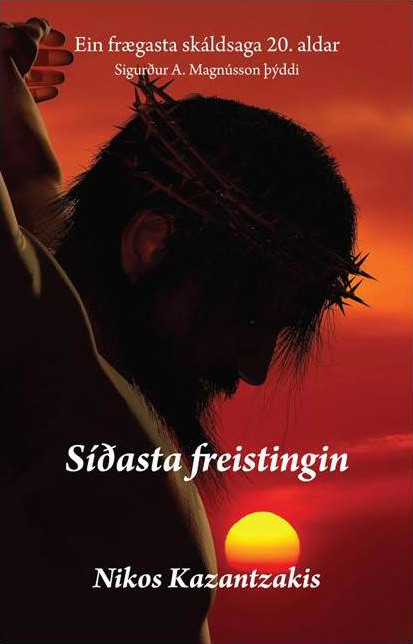
Síðasta freistingin (The Last Temptation)
Read more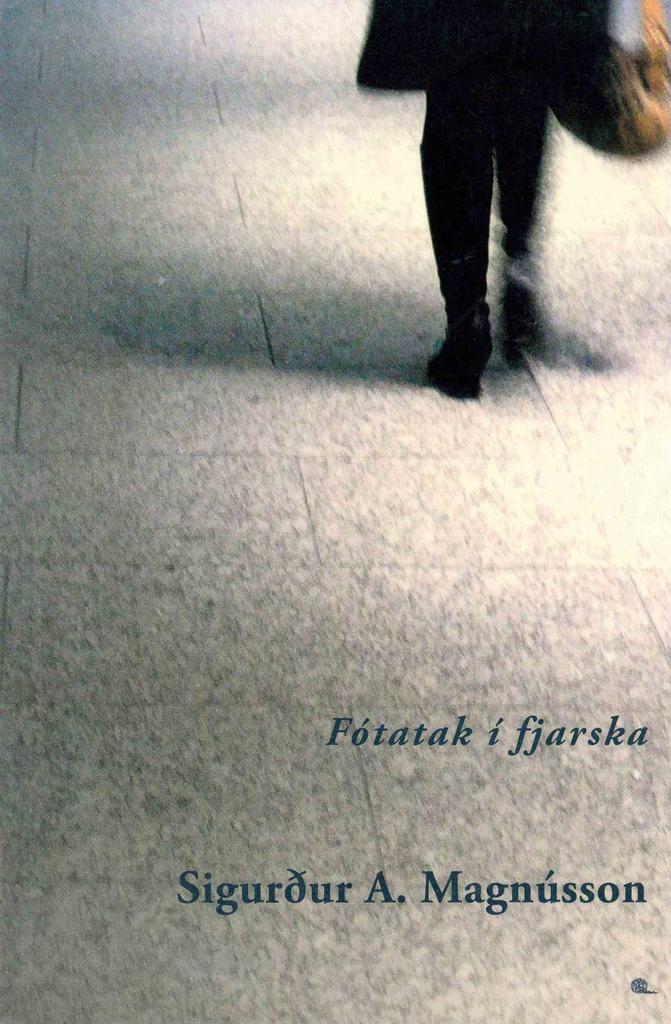
Fótatak í fjarska (Footsteps from Afar)
Read more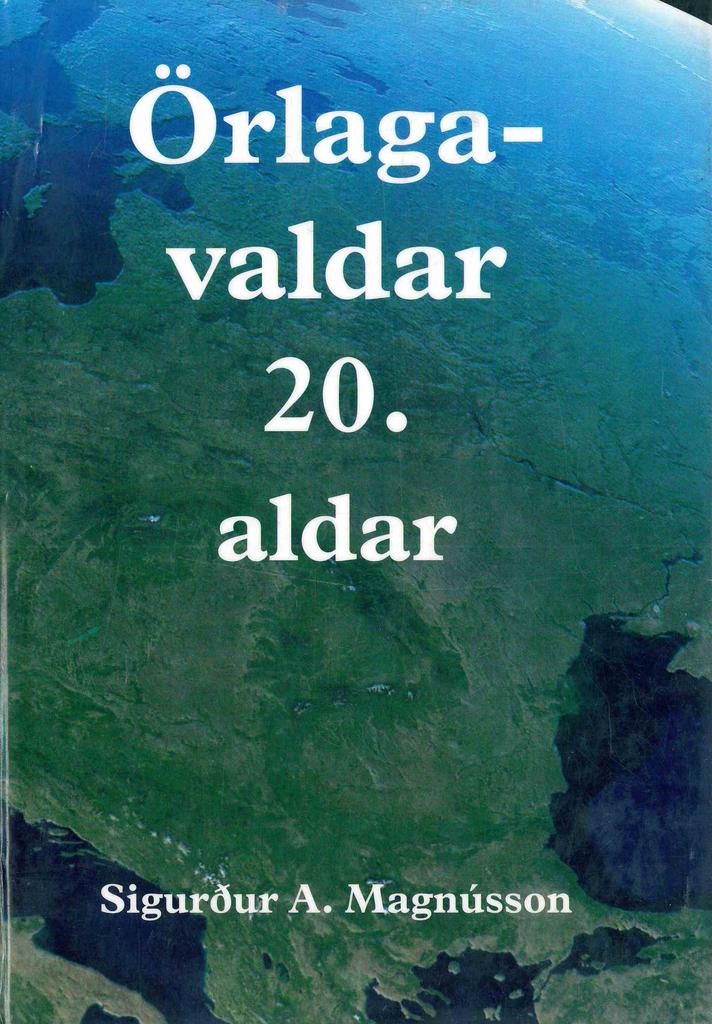
Örlagavaldar 20. aldar (20th Century People of Influence)
Read more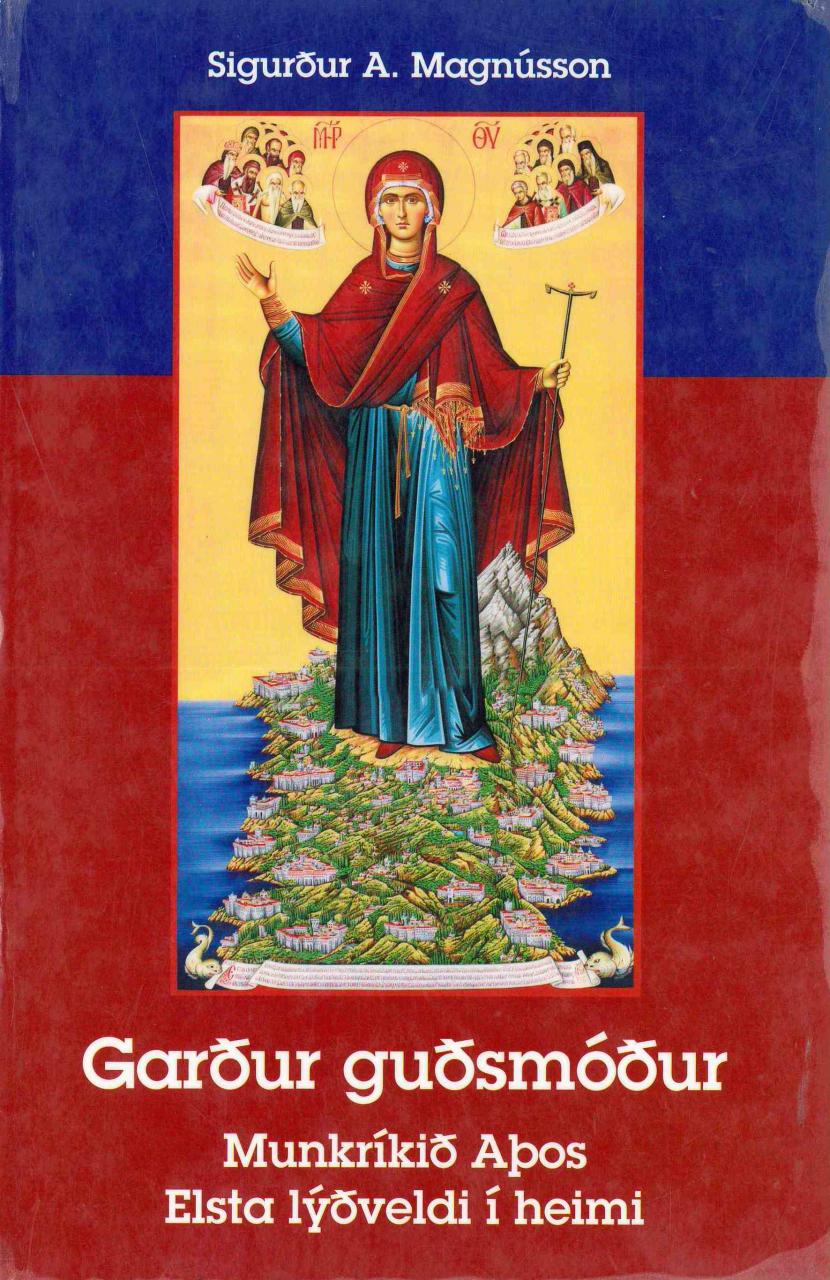
Garður guðsmóður (The Garden of Mary, Mother of God)
Read more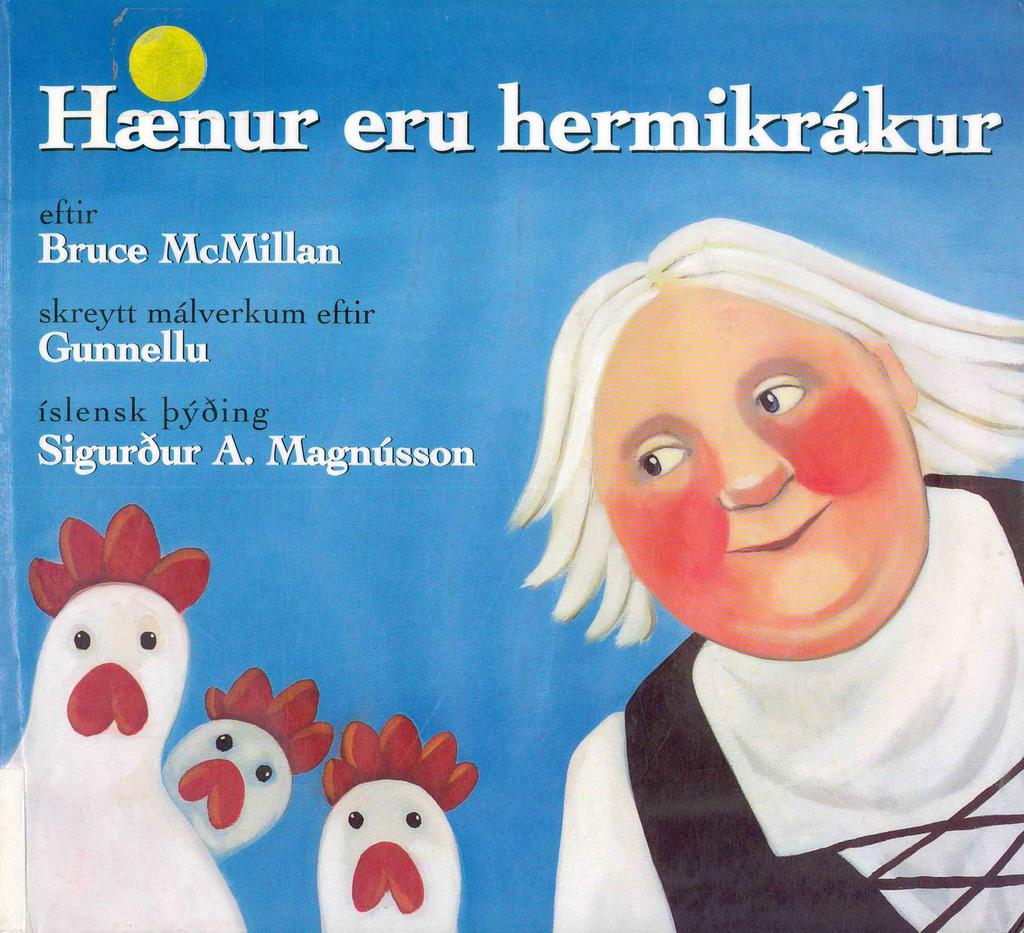
Hænur eru hermikrákur (The Problem with Chickens)
Read more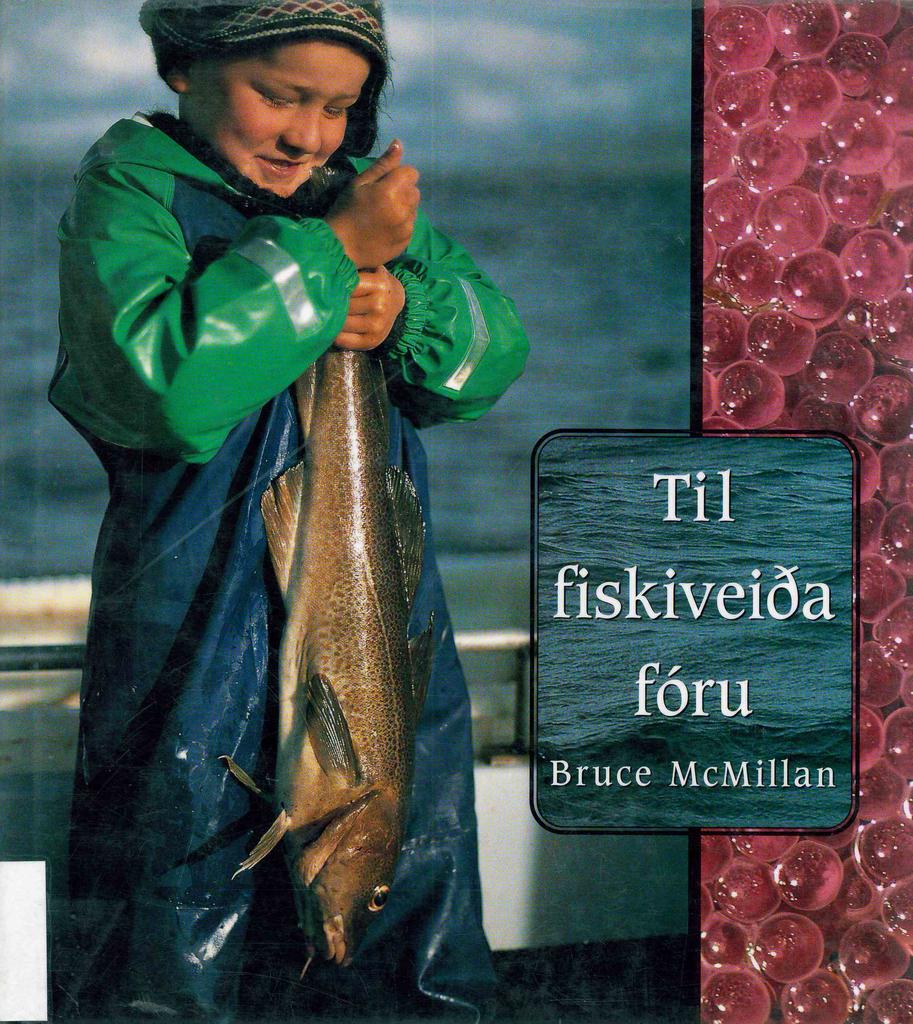
Til fiskiveiða fóru (Going Fishing)
Read more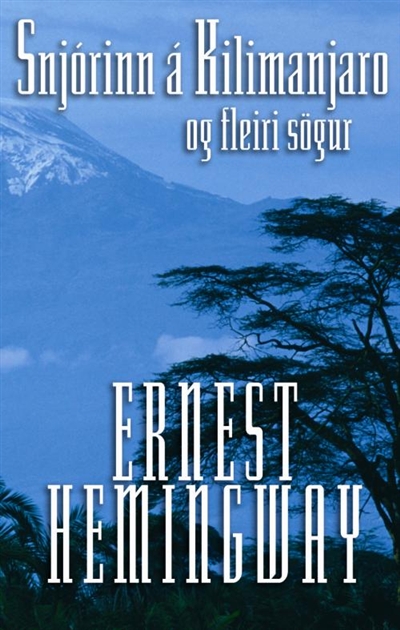
Snjórinn á Kilimanjaro og fleiri sögur (The Snows of Kilimanjaro and Other Stories)
Read morePS: Ég elska þig (PS: I Love You)
Read more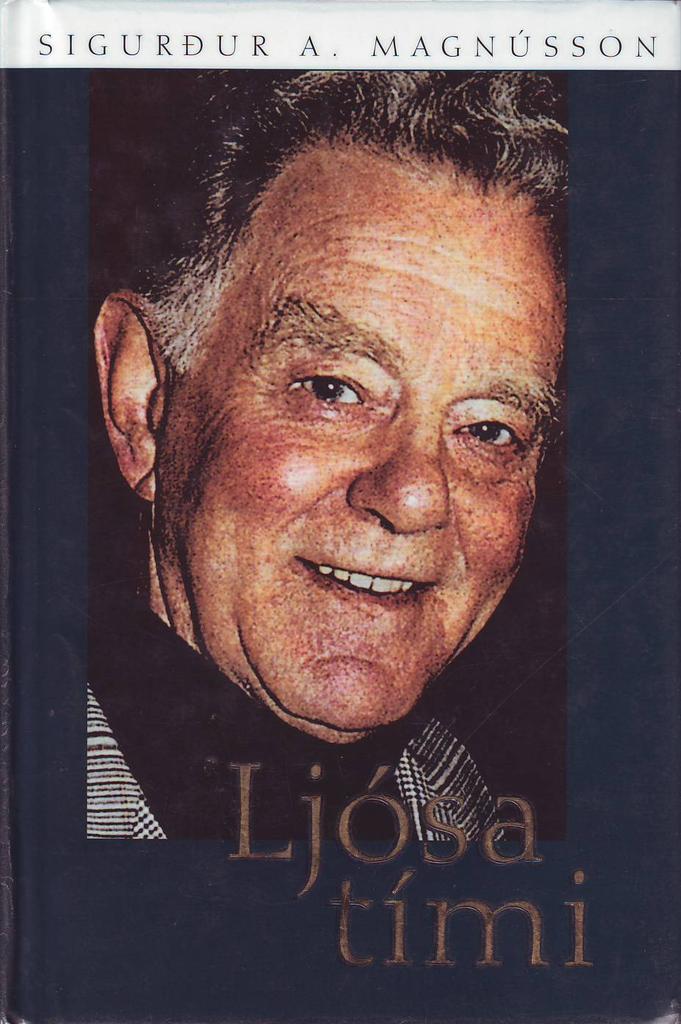
Ljósatími (Time of Light)
Read more
